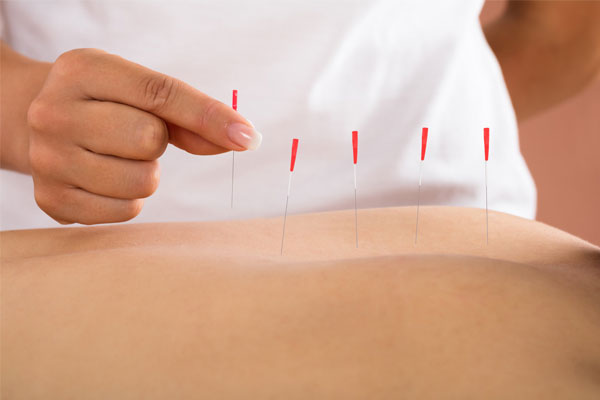WHAT IS DRY NEEDLING THERAPY?
Dry Needling Therapy is also known as Trigger Point Dry Needling or Myofascial Trigger Point Dry Needling. It is a process in which thin needles are inserted into the trigger points or tight muscles of the body. It is usually done to treat myofascial pain (Myo means Muscle and Fascia means Tissue that connects muscles).
The main purpose is to improve Tissue Healing and Restore Muscle Function. Muscles in our Body sometimes develop knotted areas called Trigger points which are quite sensitive and can be painful when touched. A physiotherapist pushes thin solid needles through the skin into trigger points. These Needles are used to stimulate the tissue and not to inject the medication.
The patient may experience different sensations, muscle soreness, aching, a muscle twitch, etc. when being needled which is considered to be a good sign. The needles may be placed deeply or superficially, for shorter or longer periods depending upon the type of pain being treated.

PRINCIPLES OF DRY NEEDLING THERAPY.
The principles of dry needling (DN) application include patient education and consent, procedural education, and practical application, such as proper positioning and palpation.
- Procedural-education :
- DN requires during the procedure:
- The patient is asked and encouraged to provide feedback and communicate with the clinician during treatment.
- The patient is asked to remain still during the procedure.
- In the case of trigger points (TrPts)-DN, the patient should be made aware of the local twitch response (LTR) which may be perceived as similar to an electric shock or other sensation. The patient should be made aware that reproduction of the LTR is the aim of TrPts-DN.
- Skilled palpation is the key element for identifying TrPts and for the application of safe DN. The therapist should have excellent knowledge of practical anatomy including muscle attachments, bony landmarks, muscle fiber directions, muscle layers.
- The therapist should be careful about the anatomical structures that need to be avoided including neurovascular structures, lungs, nerves, blood vessels, bones, joints, internal organs, etc., and should at all times aim to avoid needling into these structures.
- The TrPts are identified by skilled palpation and the muscle is positioned to allow optimal tension for palpation and treatment. Ensure that the patient and muscle are relaxed before starting the DN procedure.
